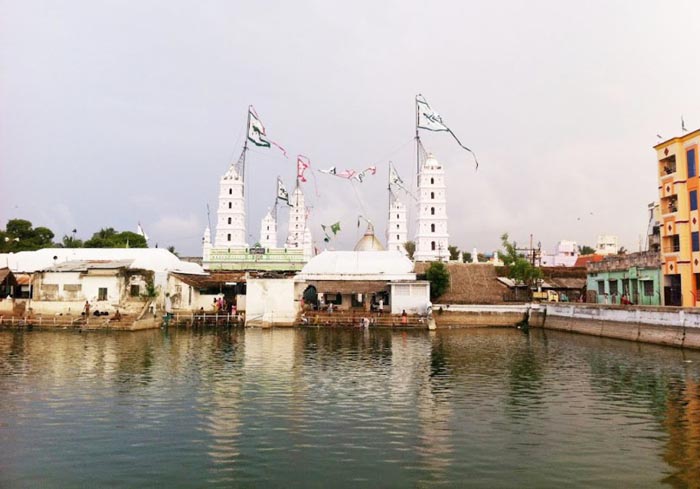Nagore Dargah

Information on Nagore Dargah (Nagapattinam, Tamil Nadu) - History & Architecture
The Nagore Dargah which is also known as the Hazrat Syed Shahul Hameed Dargah or Noor Dargah was constructed on the last resting place of the eminent Sufi saint named Hazrat Nagore Shahul Hamid. The dargah is situated in a small coastal town called Nagore in the state of Tamil Nadu in South India.
Nagore Dargah Religious Significance
The Nagore dargah is regarded to be quite an important place of pilgrim in the entire region and draws the attention of people from both Hinduism and Islam thus, representing undisturbed coexistence of both the religions. The saint that is Shahul Hamid is supposed to have made several miracles in the town and also healed the physical suffering of the Hindu king of Thanjavur, Achutappa Nayak during the 16th century. Shahul Hamid was usually known as Nagore Andavar which means the "God of Nagore". The dargah is supposed to have been constructed by a few of the devoted followers of Shahul Hamid and included huge donations from the Hindus as well. The regular worship practices of the dargah entail the ritual of offerings followed by music played by instruments such as nadaswaram. This particular practice of playing music while worshipping, is considered to be a distinctive religious custom of the Hindus. The Shifa Gunta which is actually a pool situated within the private grounds of the mentioned dargah is also regarded to be sacred and pilgrims visiting the dargah make it a point to take a blessed plunge in it. A male member is chosen from amongst the successors of the popular saint Yusuf according to the traditions of the dargah. The selected Khalifa is the one who carries out all the customary as well religious responsibilities related to the dargah.
Nagore Dargah Mythological Significance
Based on the mythological or rather historical records it is believed that the ruler of Thanjavur, Achutappa Nayak in the 16th century, made a contribution of about 200 acres of vast land to the followers of the saint Shahul after the king was cured from his sufferings with the help of the divine power of the saint. The dargah was constructed on a portion of the land that was contributed by the king. It is also said that Shahul Hamid had also forecasted his own time of death and suggested Yusuf, his adopted son regarding the formal procedures to be carried out along with the burial location following his death. A mausoleum was erected above the grave and the followers continued to adore and worship the place of the burial owing to their belief in his divine powers which existed even after his death. It is said that the wishes of people which even includes the Maratha king Pratap Singh were granted on praying to Shahul Hamid at this place which later developed into a dargah.
Nagore Dargah Architectural Significance
The dargah has been constructed in accordance with the typical Islamic style of architecture. The Nagore Dargah occupies a total area of about 5 acres and is encircled with a compound wall. The chief complex includes four different entry points on all the four directions. The dargah also has a dome which is situated on the western side of the chief entrance specifically on the tombs of Yusuf and his wife Saeeda Sultana Biwi along with Shahul. The dome is known to be plated with pure gold. The devotees worship the sandals of Shahul Hamid which are kept in the dargah as a sign of respect. The dargah compound houses five different minarets among which the tallest one belongs to the Hindu Maratha king Pratap Singh of Thanjavur.